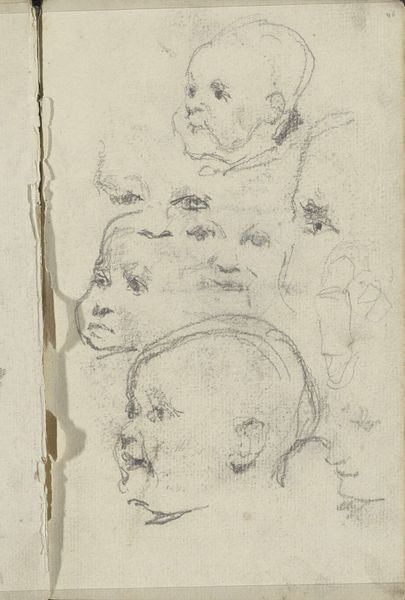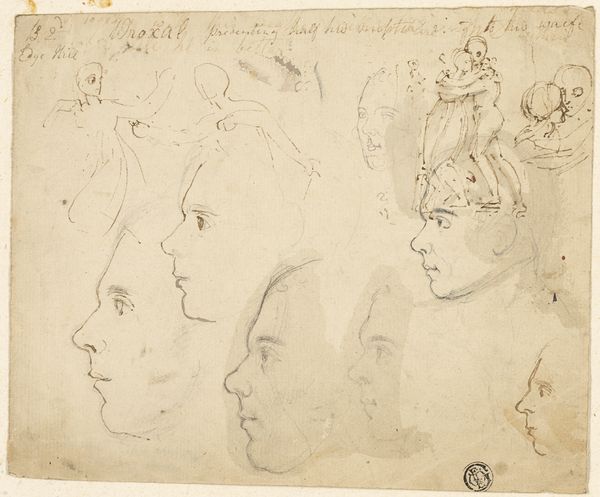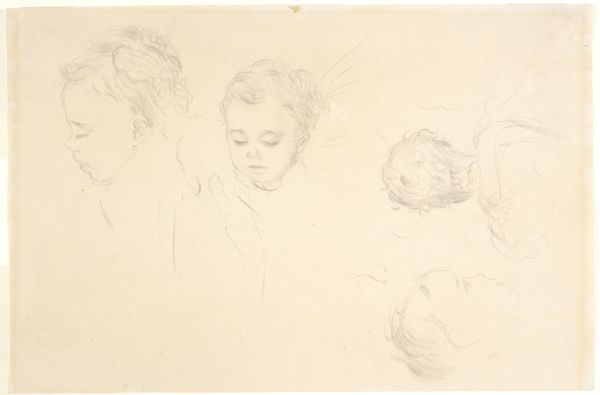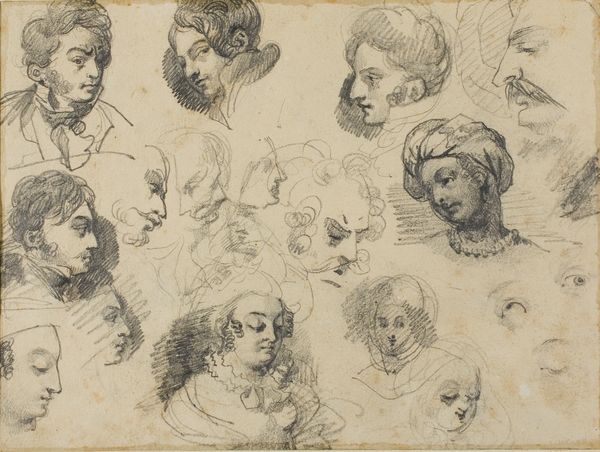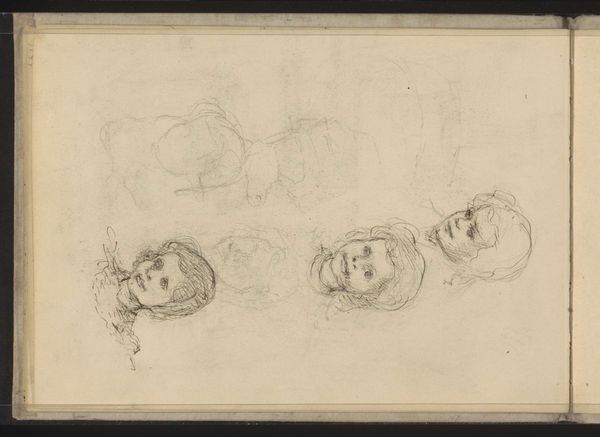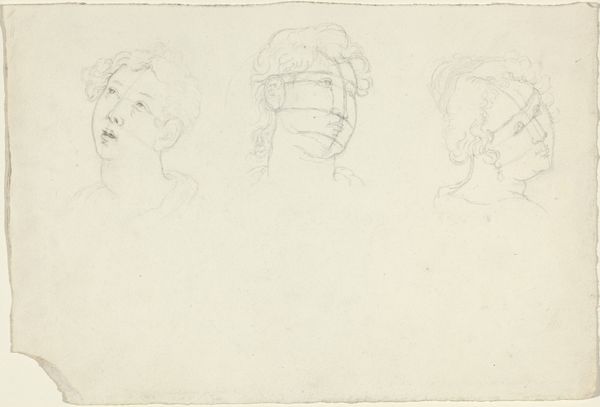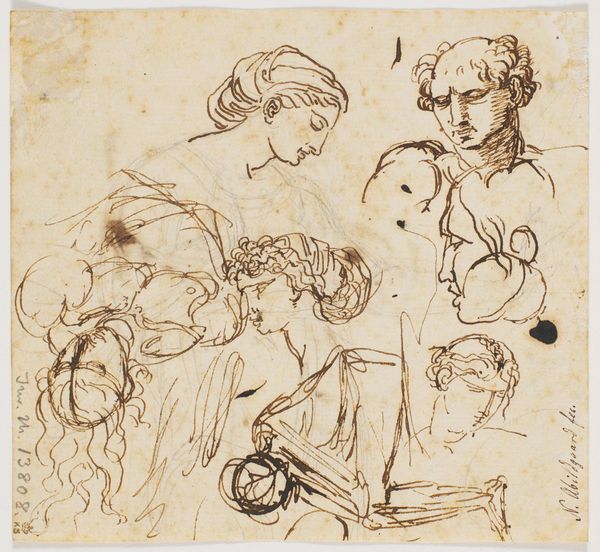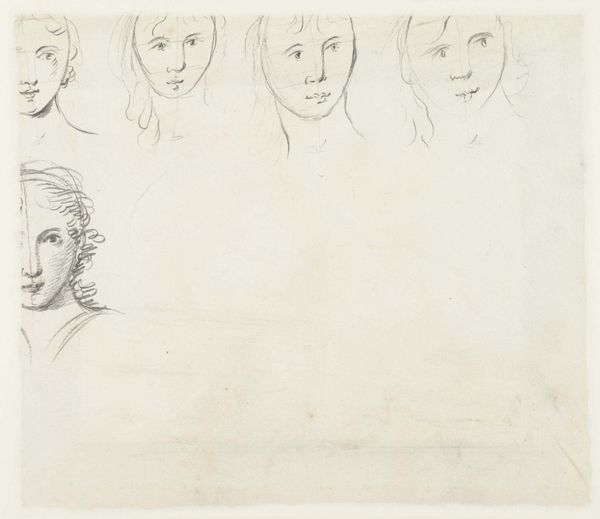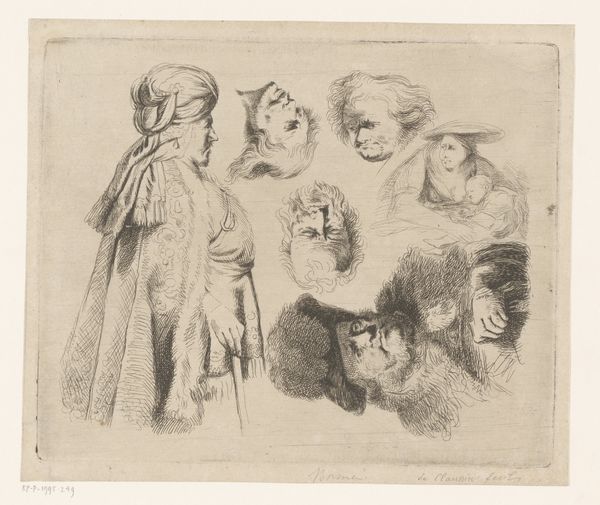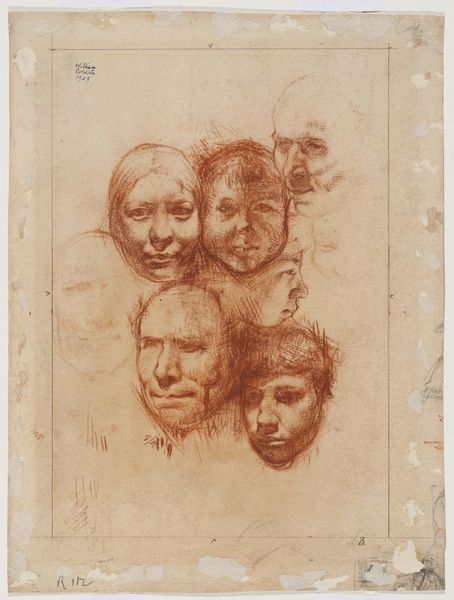
Copyright: Rijks Museum: Open Domain
Curator: Here we have "Study Sheet with Women's Heads," created by Isaac Israels sometime between 1875 and 1934. It's a pencil drawing currently residing here at the Rijksmuseum. Editor: My initial impression is one of quiet observation. The pencil work is delicate, capturing a sense of fleeting moments, as if Israels quickly sketched these women from life. They look remarkably modern somehow, almost casual. Curator: Considering Israels's wider body of work, this piece provides an intimate glimpse into his process. The Rijksmuseum setting for this artwork contextualizes it within a Dutch art history dominated by male figures. It makes me wonder about Israels's motivations in choosing women as his subjects. Was he deliberately subverting artistic norms? Editor: Absolutely. Given the period, one can't ignore the social constraints placed on women and artists. Was he simply documenting types, or was there a deeper investment in representing the female gaze, even passively? These studies could represent real women, potentially outside the traditionally depicted upper classes in artistic circles at that time. Who were they? What was their role in society? That could have implications for our interpretation of the artwork, of course. Curator: I think it also prompts a re-evaluation of representation within the artistic institutions. By showcasing these studies, what dialogues are we enabling about gender and historical narratives? It would be an amazing undertaking to uncover their personal stories and the context of Israels' decision to capture them. It may inform broader themes of inequality and representation across the late 19th and early 20th century artistic spaces. Editor: Indeed, seeing this on display also emphasizes the value of considering the artistic processes that contributed to their finished works. As a drawing, it occupies a space apart from fully-finished oil works but reveals insight to the time's artistic vision and cultural dynamics. Curator: Ultimately, I think that highlighting work like this compels us to rethink art historical narratives, inviting multiple, complex readings. Editor: And encourages audiences to look deeper into the people that inhabit our artistic and social past.
Comments
No comments
Be the first to comment and join the conversation on the ultimate creative platform.
